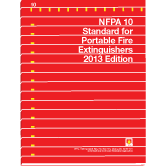Torrance, California Fire Extinguishers
Portable, wheeled and fixed unit fire extinguishers are an invaluable tool if they are readily available and properly functioning in the event of fire emergencies. Fire extinguishers are designed for specific use and should be matched to the Class of Fire it was designed to fight, such as Class A, B, C, D or Class K (Types of Fire Extinguishers) installing them near their specific designated fire hazards in vehicles, buildings, facilities or structures as described by Insurance Company, OSHA, Federal or Government Agency and Fire & Safety Codes in Torrance, California.
Six (6) Year Fire Extinguisher Service
Fire Extinguisher Service in Torrance, California
|
Six Year Service – Every six years extinguishers requiring a 12 year hydrotest shall be emptied and subject to thorough examination of mechanical parts, extinguishing agent and expelling means. When applicable maintenance procedures are done during periodic recharging or hydrotesting, the six year requirement will begin from that date. Below are Owners Manuals to aid in understanding the service & maintenance procedures for installed fire extinguishers and frequencies for tests & inspections. Pictured right is a quick reference for frequency of fire extinguisher tests & inspections in Torrance, California. |
|
Six (6) Year Fire Extinguisher Service in Torrance, California
|
|
| Below is a typical service procedure that should be completed by a factory trained and qualified fire extinguisher company in Torrance, California for an Fire Extinguisher | |


